FINRA Compliant File Sharing: Complete Guide for Financial Organizations
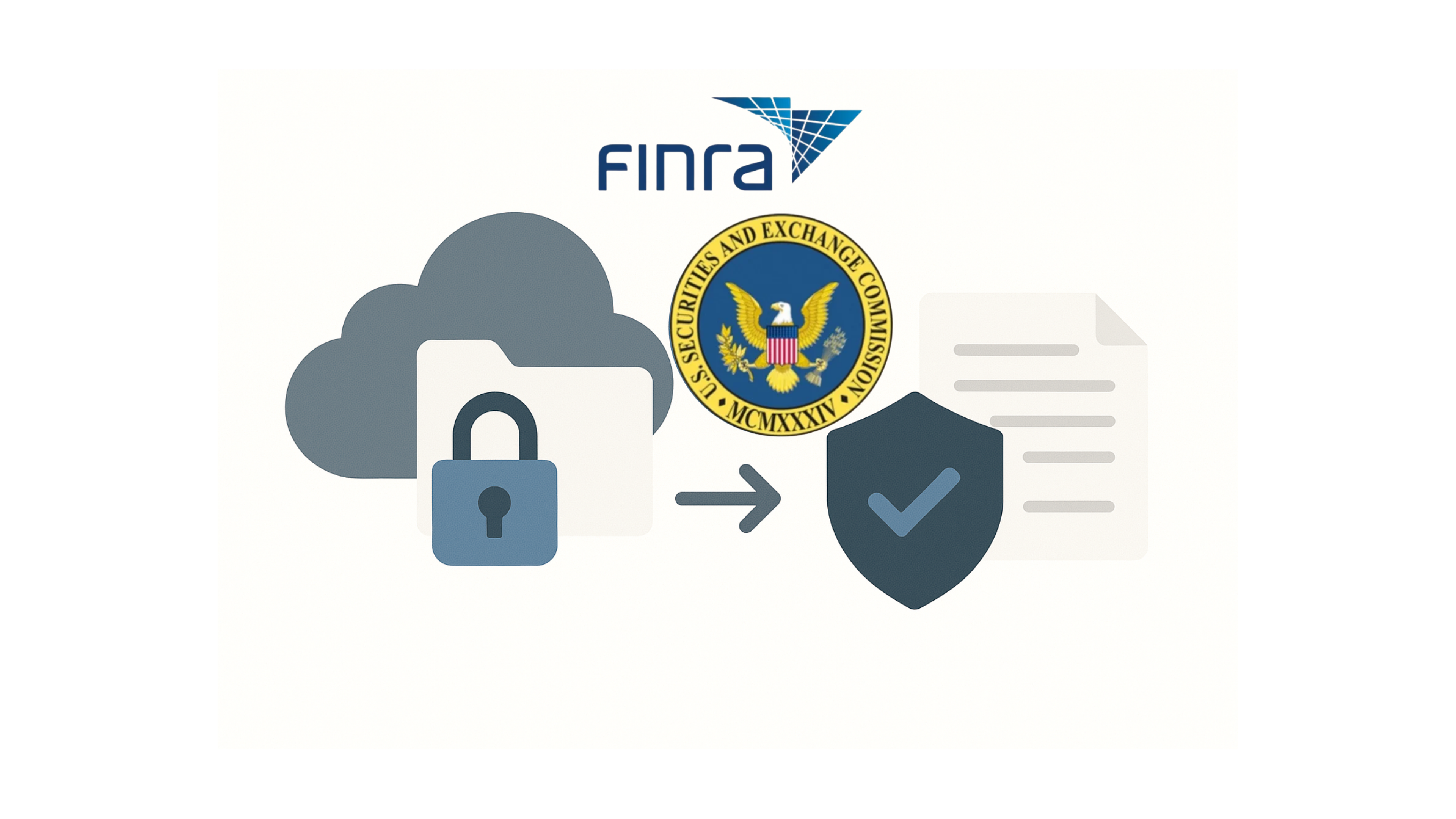
Key Takeaways
-
FINRA compliance requires financial institutions to implement secure file sharing with encryption, access controls, and comprehensive audit trails to protect investor data and maintain regulatory adherence
-
Non-compliance with FINRA file sharing requirements can result in substantial fines, regulatory sanctions, and potential expulsion from FINRA membership
-
Essential compliance features include AES 256-bit encryption, multi-factor authentication, immutable audit trails, role-based access controls, and secure sharing for all file sharing activities
-
MyWorkDrive provides a comprehensive FINRA-compliant file sharing solution with enterprise-grade security, seamless integration, simplified deployment, and FINRA compliant cloud storage for financial organizations
-
Best practices for FINRA compliance include regular security assessments, staff training, policy documentation, and continuous monitoring of file sharing activities
The Financial Industry Regulatory Authority oversees more than 3,400 securities firms and 630,000 registered representatives, making FINRA compliance a critical requirement for organizations operating in the securities industry. As financial institutions increasingly rely on digital file sharing systems to collaborate with clients and various stakeholders, ensuring compliance with FINRA requirements has become more complex and essential than ever.
Legacy file transfer methods and inadequate data security measures pose significant risks to financial organizations, potentially resulting in regulatory penalties exceeding millions of dollars. This complete guide provides financial institutions with the knowledge and tools needed to implement robust, FINRA-compliant file sharing solutions that protect customer data while supporting operational efficiency.
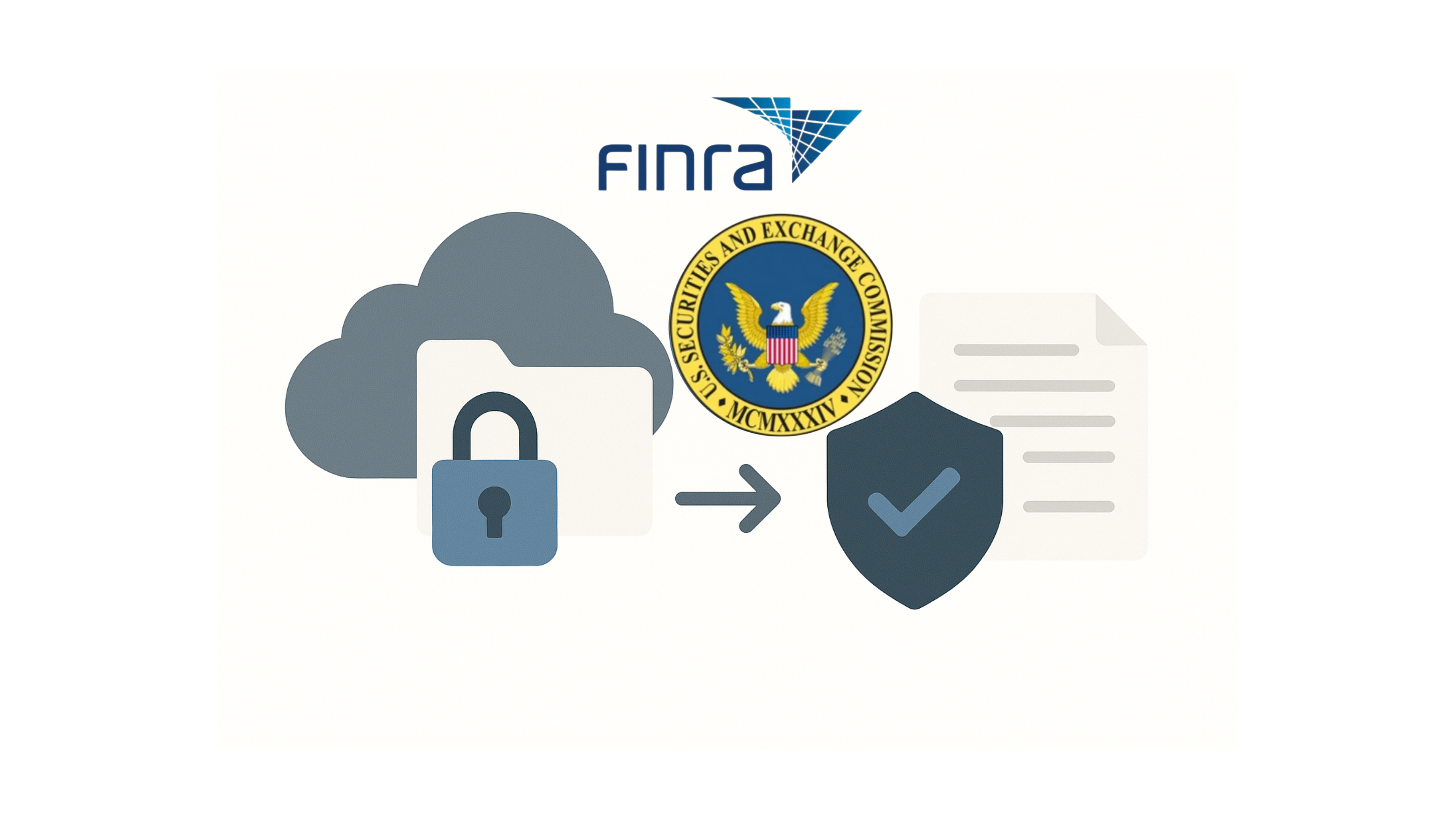
Understanding FINRA Compliance Requirements
FINRA is the U.S. self-regulatory organization for broker-dealers. Member firms must follow both FINRA rules and SEC rules under the Securities Exchange Act.
Supervision and third-party vendors
Firms remain fully responsible for compliance when outsourcing to cloud or file-sharing providers. They must maintain a supervisory system and written supervisory procedures that cover any outsourced activities, perform due diligence on vendors, and oversee sub-vendors as applicable. These obligations arise under FINRA’s supervision framework (e.g., Rule 3110) and are reinforced in Regulatory Notice 21-29.
Books and records: FINRA Rule 4511
Rule 4511 requires firms to make and preserve books and records as required by FINRA rules and the Exchange Act, to keep FINRA records without a specified period for at least six years, and to preserve records in a format and media that comply with SEC Rule 17a-4.
SEC Rules 17a-3 and 17a-4
Rule 17a-3 specifies what records broker-dealers must create. Rule 17a-4 governs how long and in what manner records must be preserved and produced to regulators upon request. Since 2023, 17a-4 permits either WORM storage or an audit-trail alternative that allows recreation of an original record if modified or deleted; firms must be able to furnish records in a reasonably usable electronic format.
Implications for file sharing and cloud storage
For systems used to transmit or store business records or communications, firms should ensure:
• vendor contracts and controls support supervisory review and regulatory access;
• retention schedules and storage media meet 17a-4 requirements;
• records are promptly retrievable for SEC, FINRA, or state examinations;
• policies cover electronic business communications captured as “books and records.”
Information security
Firms must implement administrative, technical, and physical safeguards that protect customer information and ensure the integrity and availability of required records throughout their retention periods, consistent with their supervisory obligations and applicable SEC/FINRA rules.
Why FINRA Compliance Matters for Organizations
FINRA and SEC rules form the baseline for investor protection and operational integrity. Broker-dealers must supervise how they use third-party technology, make and preserve required records, and protect customer information.
Protecting investor data
Firms need written policies and controls that safeguard customer records and information across their lifecycle, consistent with SEC Regulation S-P. This includes administrative, technical, and physical safeguards, plus incident-response and customer notification under the 2024 amendments.
Maintaining market integrity during collaboration
When using cloud or file-sharing platforms, firms remain fully responsible for compliance. Supervision must cover all outsourced functions and sub-vendors, with WSPs, due diligence, and regulatory access to records.
Books and records for remote and hybrid work
Records that are “business as such” communications and required books must be created and preserved, and be promptly retrievable for regulators. SEC Rules 17a-3/17a-4 define what to make and how to preserve it. Electronic record keeping may use WORM or an audit-trail alternative that allows recreation of an original if modified or deleted.
Business continuity and efficiency
Systems that support these supervision, retention, and retrieval requirements enable compliant remote access and faster exam response, reducing operational risk during disruptions.
Competitive differentiation
Demonstrable adherence to supervision, record keeping, and data-protection standards is a selection criterion for institutional clients and is evaluated in FINRA examinations.
Practical takeaway
Configure any file-sharing or collaboration stack to:
1) fall under your supervisory system and WSPs
2) capture and retain required business records per 17a-3/17a-4
3) implement Reg S-P safeguards and incident response. These are the governing levers for “FINRA-aligned” file sharing
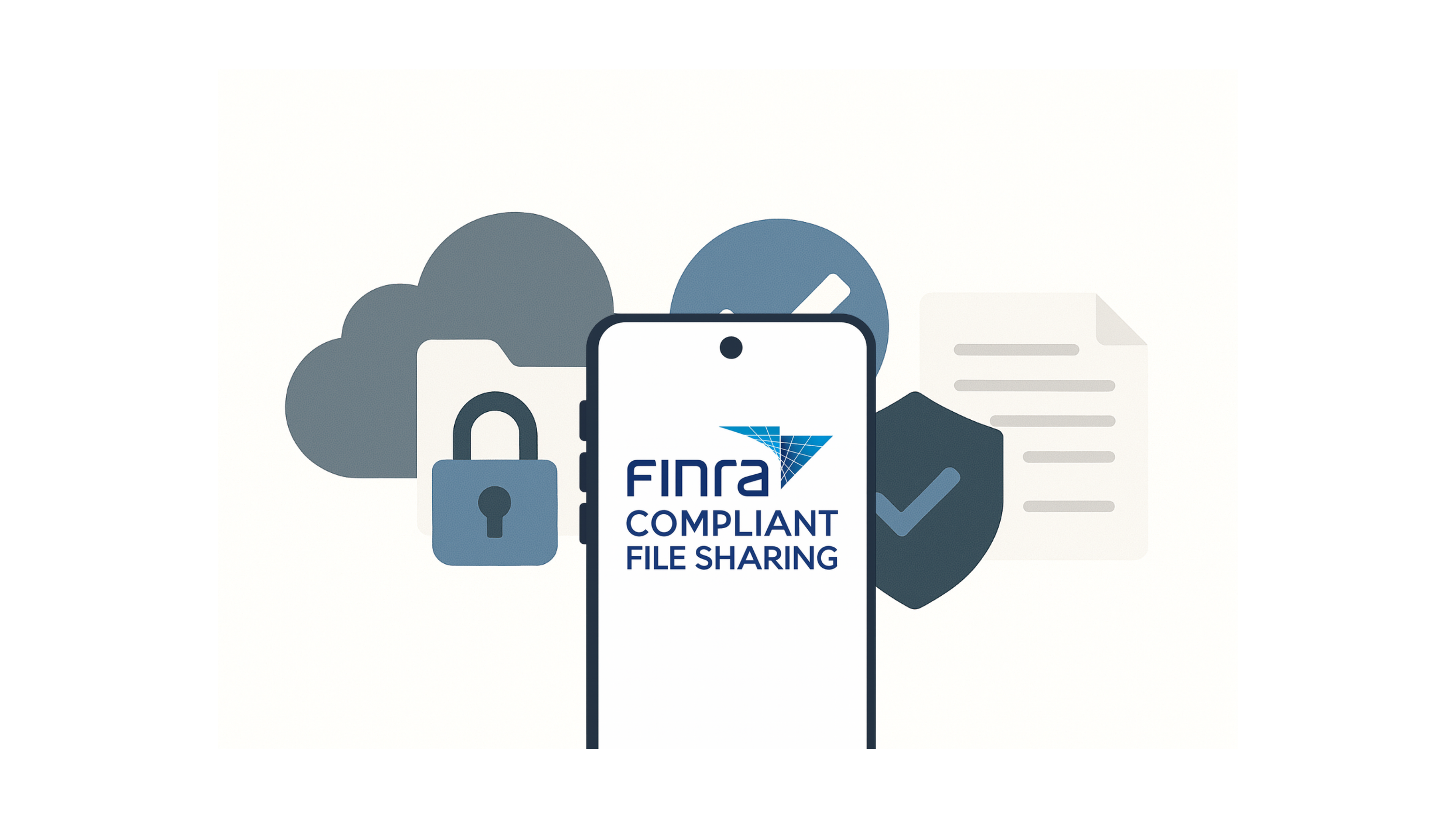
Risks and Consequences of Non-Compliance
Regulators sanction firms for supervision, books-and-records, and customer-information failures tied to electronic communications and data handling. FINRA can censure, fine, suspend, or expel members or individuals.
Monetary penalties
The SEC has issued large, recent settlements for record keeping failures involving off-channel messaging: $392.75M across 26 firms (Aug 2024) and $81M across 16 firms (Feb 2024). These are separate from FINRA actions.
FINRA penalties also occur, typically smaller; e.g., Ceros Financial Services was censured and fined for failing to supervise and retain business emails and for Reg S-P deficiencies.
Historic example: Pershing LLC paid $3M for Customer Protection Rule violations.
Operational sanctions
Beyond fines, FINRA may impose suspensions, bars, or expulsion, which can halt business or individual careers.
Books-and-records exposure
FINRA’s oversight reports and guidance stress that failures to create, preserve, and retrieve required records—including electronic communications—lead to disciplinary actions.
Security and privacy exposure
Cases also cite inadequate safeguards for customer information under Reg S-P when firms allow business communications or data to leave controlled systems.
Practical takeaway
Map risks to three controls: 1) supervision over all comms and vendors, 2) records creation/retention per SEC Rules 17a-3/17a-4, 3) Reg S-P safeguards and incident response. Non-compliance triggers fines, suspensions, and exam scrutiny.Essential Security Features for FINRA Compliant File Sharing
Implementing FINRA-compliant file sharing requires specific technical safeguards that protect sensitive financial data throughout its entire lifecycle. These security features work together to create comprehensive protection that meets regulatory requirements while supporting business operations.
Encryption and Data Protection
Use TLS 1.3 for data in transit with AEAD suites (AES-GCM or ChaCha20-Poly1305). Use AES (commonly 256-bit) for encryption at rest. These are industry standards, not FINRA-specific mandates.
Regulatory posture
SEC Regulation S-P requires written safeguards and an incident-response program, as well as customer notice, after certain breaches. It does not require end-to-end encryption and leaves control design to the firm.
Record keeping interplay
Encryption must not impede SEC Rule 17a-4 obligations. Broker-dealers must preserve and be able to furnish records (and audit trails, if applicable) in human-readable and reasonably usable electronic formats, using either WORM storage or the audit-trail alternative. Key escrow/archiving must enable supervisory review and regulatory production.
Key management
Prefer centralized key management with FIPS 140-3–validated modules or HSMs, with rotation and separation of duties. Beneficial for risk reduction but not mandated by FINRA/SEC.
Downstream controls
DRM/DLP features (watermarking, view-only, expiry, print/download blocks) are useful to reduce leakage, but they are not required. FINRA guidance highlights encryption and DLP as effective controls within a risk-based program.
Metadata
Minimize sensitive data in filenames/metadata or encrypt where feasible, while maintaining indexes and retrieval so examinations are not hindered.
Bottom line
Design for TLS 1.3 in transit, AES-class encryption at rest, FIPS-validated key custody, and retention/production that satisfies 17a-4. Treat E2E encryption as a design option only if supervision and records production remain intact under Reg S-P and 17a-4.
Access Controls and Authentication
Use MFA for privileged, remote, and customer access. FINRA highlights MFA as a key control against account takeovers, and describes adaptive authentication with device, geolocation, and “impossible travel” checks as effective practice.
Apply role-based access control and least privilege. Review entitlements on a schedule and promptly remove stale access. FINRA’s core controls for small firms call for limiting access by business need and regularly reviewing privileged accounts.
Add time- and location-based restrictions where risk justifies it. FINRA’s account-takeover notice references adaptive triggers such as new devices, unusual locations, or high-risk actions.
Authenticate devices and manage endpoints. Maintain an inventory of assets that access firm systems, enforce security baselines, and use posture checks or zero-trust controls for remote access.
Integrate SSO with your identity provider to centralize policy and logging. Follow recognized identity standards for authenticator assurance and federation.
Regulatory posture: FINRA expects “reasonably designed” controls aligned to your risk profile, and Reg S-P requires written safeguards and incident-response. The 2024 FINRA report adds no new mandates; it points to effective practices firms can adopt.
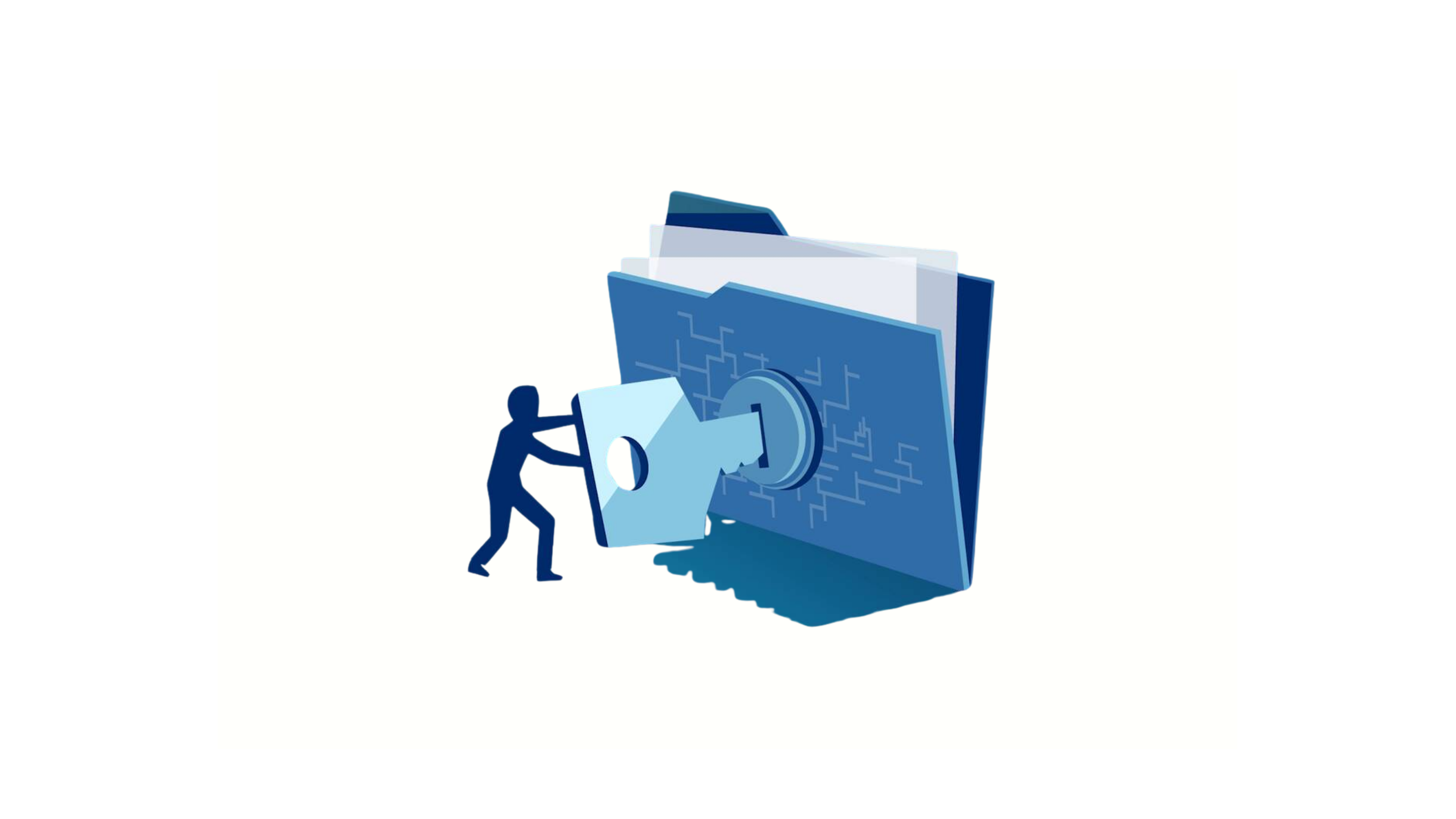
Audit Trails and Monitoring
Maintain logging and monitoring sufficient to supervise systems and detect incidents consistent with your risk profile and written supervisory procedures under FINRA and Reg S-P. Centralize logs and monitor for anomalies.
What to capture
Capture data that enables incident reconstruction and supervisory review (for example: user identity, timestamp, action, source, result). FINRA highlights centralized logging, SIEM, and UEBA as effective practices.
Retention and integrity
When logs constitute records you must preserve, store them per SEC 17a-4 using either WORM or the audit-trail alternative, and be able to furnish them in a reasonably usable electronic format.
Real-time alerting
Use real-time or near-real-time alerting for high-risk events to speed response. FINRA materials emphasize timely detection and monitoring as effective controls.
Reporting
Ensure you can promptly produce required records and summaries that support examinations; format is flexible so long as it is reasonably usable.
SIEM integration
Integrate with a SIEM/UEBA to correlate file activity with other events across the environment for better detection and response; this is recommended, not mandated.
Security Assessment and Gap Analysis
Perform a risk-based assessment of current file-sharing usage, tooling, and procedures against applicable obligations: FINRA Rule 3110 (supervision), FINRA Rule 4511, and SEC Rules 17a-3/17a-4 (books and records), and SEC Regulation S-P (safeguards and incident response). Map findings to your written supervisory procedures (WSPs).
Evaluate tools and vendors
Use structured vendor due diligence per FINRA’s outsourcing guidance: scope of outsourced functions, sub-vendor oversight, regulatory access to records, retention/retrieval capabilities, and security controls. Favor vendors whose roadmaps align with new SEC S-P requirements for incident response and customer notice.
Prioritize remediation
Rank gaps by risk and by known compliance timelines. Examples: implement controls needed to preserve and furnish records in a “reasonably usable electronic format” under Rule 17a-4, and meet the amended Reg S-P incident-response and notification requirements within the stated compliance periods.
Coverage of technical and procedural controls
Include encryption and access controls, logging and monitoring, remote/third-party access, user training, and incident response. FINRA’s cybersecurity checklists and “effective practices” summaries are suitable scaffolds for this review.
Documentation and roadmap
Document findings, owners, milestones, and success metrics. FINRA’s reports explicitly encourage firms to use gap analyses against their priorities letters and exam findings to drive updates to WSPs and controls.
Policy Development and Documentation
Write and maintain WSPs that cover file-sharing use, supervision, and escalation. Policies must be reasonably designed for your risks and updated as business or rules change.
Data classification
Adopt a risk-based classification scheme to drive controls (access, encryption, review). Not mandated by rule, but aligns with Reg S-P’s requirement to safeguard customer information through written policies and procedures.
Retention and disposal
Define schedules that meet SEC books-and-records rules and FINRA 4511. Preserve required records and be able to furnish them in a reasonably usable electronic format. Apply secure disposal only where allowed under Reg S-P and never to records still within a regulatory retention period.
Reviews and updates
Establish formal review cycles. Keep WSPs current, promptly communicate amendments, and retain prior versions per Rule 17a-4.
Documentation
Maintain a policy inventory, ownership, and revision history. Use FINRA’s WSP checklist to evidence completeness and update cadence.
Staff Training and Change Management
Train registered persons per FINRA rules: hold an annual compliance meeting and complete annual Regulatory Element CE; design Firm Element training by role and business activity.
Extend risk-based training to all staff who touch customer data or records. FINRA evaluates firms on staff training as part of cybersecurity reviews.
Update content as rules and risks change. Keep WSPs and training aligned with new or amended requirements.
Manage change explicitly. Use documented change-management procedures for new file-sharing tools and processes to limit disruption and control risk.
Validate effectiveness. Use phishing simulations, tabletop exercises, and targeted refreshers; these are effective practices cited in FINRA advisories on cyber incident response.
Certification paths are optional. If used, map them to job roles and supervisory obligations; they are not a regulatory requirement.
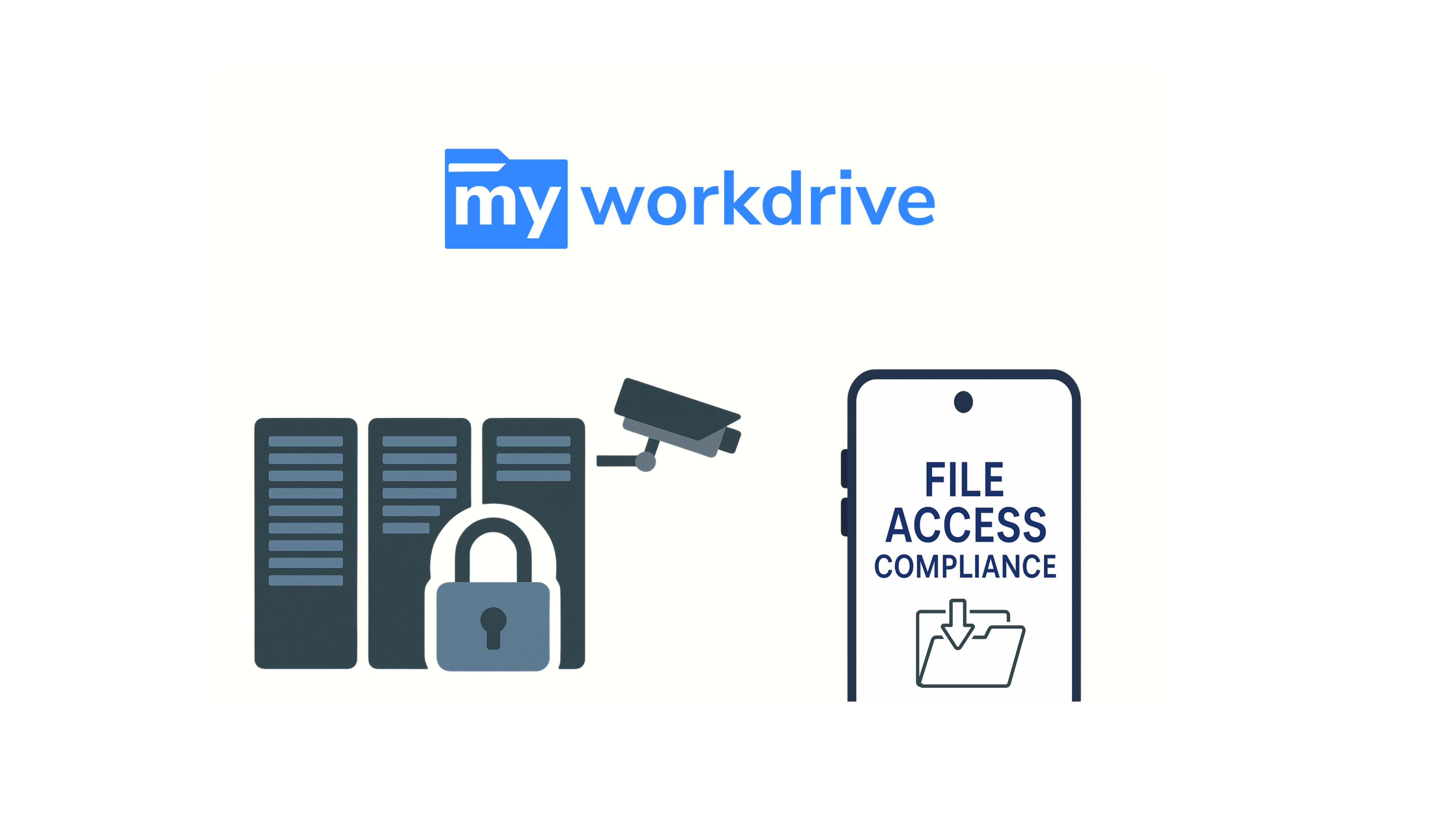
MyWorkDrive: Your FINRA Compliance Solution
MyWorkDrive enables secure remote access to internal file shares without moving data to a third-party public cloud. Files stay on your servers or private cloud under your control. This reduces data replication to external providers and can simplify oversight.
Controls that help meet supervisory and security obligations
Built-in features support risk-based programs: DLP and watermarking, download and copy/paste blocks, and access logging for supervisory review. Use these within your written supervisory procedures; vendor use does not shift regulatory responsibility.
Record keeping and privacy
If files or communications constitute required books and records, preserve them per SEC Rule 17a-4 (WORM or audit-trail alternative) and be able to furnish them in a reasonably usable electronic format. Reg S-P requires written safeguards and incident-response with customer notice after certain breaches. MyWorkDrive complements these obligations but does not replace them.
Positioning
Use MyWorkDrive to keep data in place, enable secure hybrid work, and apply DLP and logging, while your firm’s policies, storage, and oversight satisfy FINRA/SEC requirements.
MyWorkDrive’s FINRA Compliance Features
MyWorkDrive can support a firm’s supervisory and record keeping program when configured under your WSPs. Supervision is governed by FINRA Rule 3110 and outsourcing guidance; books-and-records duties flow from FINRA Rule 4511 and SEC Rule 17a-4.
Audit logging
The platform can generate detailed access logs (user, time, action, path) for supervisory review and incident reconstruction. If logs or file events are “books and records,” preserve them per SEC 17a-4 using either WORM or the audit-trail alternative and ensure prompt retrieval. FINRA highlights centralized logging/SIEM as an effective practice.
Data loss prevention controls
Use built-in DLP options such as view-only modes, watermarking, and blocks on download/print to enforce least-privilege and reduce leakage. These are risk-based controls, not explicit FINRA mandates.
Reporting and production
Export activity data and summaries to support exams. The requirement is the ability to furnish records in a reasonably usable electronic format; firms decide on report layouts.
Integrations
Forward logs to your SIEM and compliance tooling for correlation and retention under your schedules. FINRA guidance endorses centralized logging and monitoring as an effective practice.
Scope note
FINRA does not certify platforms. Using a vendor does not shift regulatory responsibility. Configure MyWorkDrive within your supervisory system and retention architecture.
Enterprise-Grade Security Architecture
Use TLS 1.3 with AEAD ciphers (AES-GCM or ChaCha20-Poly1305) for data in transit and AES-class encryption for data at rest.
Target FIPS 140-3–validated cryptographic modules for key management. FIPS 140-2 modules may still be in use but are in transition toward historical status.
Adopt a zero-trust model: continuous verification, least privilege, and policy-driven access across users, devices, and resources per NIST SP 800-207.
Use behavioral analytics/UEBA to detect anomalous access in near real time. Treat this as a best practice to improve detection and response, not a regulatory mandate.
If obtained, SOC 2 Type II and ISO 27001 provide third-party assurance on security and availability controls and on an ISMS, respectively. They complement, but do not replace, your regulatory obligations.
Availability and DR depend on your deployment. MyWorkDrive keeps data in place on your servers or private cloud; any uptime guarantees come from your hosting stack. If you state 99.9% availability, plan for ~43 minutes monthly downtime and architect redundancy accordingly.
Seamless Integration and Deployment
Native integration with Active Directory and enterprise identity management systems enables organizations to leverage existing user accounts and authentication systems without requiring duplicate administration or user training. This integration simplifies user management while maintaining centralized control over access permissions and security policies.
API-based connectivity with existing financial applications and databases supports workflow automation and reduces manual file handling processes. These integrations can automate compliance-related activities such as audit trail generation and regulatory reporting while maintaining security and access controls.
Cloud, on-premises, and hybrid deployment options meet diverse organizational needs and infrastructure requirements. Financial institutions can choose the deployment model that best aligns with their risk tolerance, regulatory requirements, and existing infrastructure investments while maintaining full compliance capabilities.
Rapid deployment process with minimal IT overhead and user disruption enables organizations to achieve compliance quickly without extensive implementation projects. Many organizations can implement MyWorkDrive within hours rather than weeks, reducing time-to-compliance and minimizing business disruption during the transition process.
24/7 expert support and dedicated customer success management ensure that financial institutions receive the assistance they need to maintain compliance and optimize their file sharing operations. This support includes compliance guidance, technical assistance, and ongoing optimization recommendations based on industry best practices.
Cloud Storage Considerations for Financial Organizations
When evaluating cloud storage solutions, financial organizations must prioritize compliance with the Financial Industry Regulatory Authority (FINRA) and the security of their most sensitive information. The transition from legacy file transfer methods to modern cloud storage introduces both opportunities and risks, making it essential for financial institutions to scrutinize every aspect of their chosen solution.
A primary consideration is the protection of financial data, including transaction records and customer information. Cloud storage providers must offer robust encryption—both at rest and in transit—to ensure that sensitive files remain confidential and protected from unauthorized access. Equally important are granular access controls, which allow organizations to define who can access, modify, or share specific files, thereby reducing the risk of data breaches and ensuring compliance with FINRA rules.
Secure file transfer protocols are another critical requirement. Financial organizations should verify that their cloud storage solution supports secure file transfer mechanisms, such as SFTP or HTTPS, to safeguard data during transmission. Additionally, the provider’s security protocols should align with industry best practices and regulatory requirements, including regular security audits and vulnerability assessments.
Compliance with FINRA’s regulatory obligations extends to data retention and disposal. Cloud storage solutions must support the retention of electronic records for the required periods and provide mechanisms for secure, auditable disposal when records are no longer needed. This ensures that transaction records and other sensitive information are managed in accordance with FINRA rules and other regulatory requirements.
Due diligence is essential when selecting a cloud storage provider. Financial organizations should assess the provider’s track record, security certifications, and ability to demonstrate compliance with FINRA and other relevant regulations. By thoroughly evaluating these factors, financial institutions can ensure the confidentiality, integrity, and availability of their financial data, mitigate risks, and maintain trust with clients and regulators.
Due Diligence in Selecting File Sharing Solutions
Selecting a file sharing solution is a critical decision for financial institutions, as it directly impacts their ability to achieve and maintain FINRA compliance. Due diligence in this process goes beyond evaluating basic functionality; it requires a comprehensive assessment of the solution’s security, compliance, and operational capabilities.
Financial organizations must begin by examining the solution’s security features, including robust encryption, advanced access controls, and strong authentication protocols. These elements are essential for protecting sensitive information such as customer data and transaction records, and for ensuring that only authorized personnel can access or share files. The solution should also provide detailed audit trails and monitoring capabilities to support regulatory compliance and facilitate incident response.
Another key aspect of due diligence is evaluating the solution’s ability to deliver comprehensive protection for all types of sensitive information. This includes ensuring that the file sharing platform can handle the specific regulatory requirements of the financial industry, such as data retention, secure disposal, and immutable record keeping. Compatibility with existing systems and scalability to support future growth are also important considerations, as they contribute to operational efficiency and minimize disruption during implementation.
Financial institutions should also assess the solution’s support for secure collaboration and emerging technologies, which can enhance productivity while maintaining compliance. By selecting a file sharing solution that aligns with regulatory requirements and organizational needs, financial organizations can reduce the risk of non-compliance, avoid regulatory penalties, and ensure the security and integrity of their data.
Ultimately, thorough due diligence enables financial institutions to choose a file sharing solution that not only meets FINRA compliance standards but also supports secure, efficient, and future-ready file sharing practices.
Implementation Strategy with MyWorkDrive
Plan a phased rollout mapped to FINRA Rule 3110 (supervision), FINRA Rule 4511, and SEC Rules 17a-3/17a-4 for creation, preservation, and production of records.
Under 17a-4, preserve records using WORM or the audit-trail alternative and be able to furnish them in a reasonably usable electronic format.
Use MyWorkDrive to provide secure remote access with DLP and access logging, and pair it with an electronic record keeping/archiving platform that satisfies 17a-4. Compliance responsibility remains with the firm; outsourcing does not transfer it.
Configure controls. Enforce least-privilege access, MFA, Conditional Access, and NTFS/ACL with ABE. Enable watermarking and read-only paths where needed. Route logs to a SIEM and confirm they meet audit-trail requirements. Connect to storage that provides immutability or qualified audit trails. Set up tested export jobs for prompt, human-readable production.
Run a pilot. Use a limited user group. Validate retention, audit-trail integrity, search, legal holds, supervisory review, and export against exam-style requests. Capture feedback and remediate gaps.
Train and manage change. Provide role-based training, admin runbooks, and updated written supervisory procedures. Reinforce on-channel communications and prohibit off-channel workarounds.
Roll out in stages. Cut over by business unit or repository. Maintain coexistence plans and performance baselines. Monitor access, errors, and export success rates.
Monitor and optimize. Test exports on a fixed cadence. Re-verify undertakings, redundancy, indexing, and audit-trail integrity. Tune DLP and performance. Update mappings and procedures when rules or business processes change.
Future Trends in FINRA Compliant File Sharing
As the financial industry continues to evolve, so too do the requirements and expectations for FINRA compliant file sharing. Future trends are being shaped by rapid advancements in technology, increasing regulatory obligations, and the growing need for secure, efficient collaboration across financial organizations.
One of the most significant trends is the widespread adoption of cloud storage solutions that offer advanced security protocols, including robust encryption, granular access controls, and secure file transfer capabilities. These technologies enable financial institutions to protect sensitive information, such as financial data and transaction records, while supporting remote work and seamless collaboration.
Regulatory compliance remains a top priority, with financial organizations facing heightened scrutiny around data retention, secure disposal, and third-party access. As FINRA rules and other regulatory requirements continue to evolve, institutions must be prepared to adapt their file sharing practices to ensure ongoing compliance. This includes implementing disaster recovery strategies and comprehensive protection measures to safeguard data integrity and confidentiality in the face of emerging threats.
The integration of emerging technologies, such as artificial intelligence and machine learning, is also expected to play a larger role in enhancing security protocols and automating compliance monitoring. These innovations can help financial institutions identify risks in real time, streamline regulatory reporting, and ensure that file sharing activities remain within the bounds of regulatory obligations.
Looking ahead, financial organizations must prioritize secure collaboration, operational efficiency, and proactive compliance to maintain client trust and mitigate risks. By investing in finra compliant file sharing solutions that address both current and future regulatory requirements, financial institutions can position themselves for success in an increasingly complex and dynamic environment.
Frequently Asked Questions
What rules apply, and how does MyWorkDrive support them?
Primary record keeping obligations come from Exchange Act Rules 17a-3/17a-4 and FINRA Rule 4511. Rule 4511 requires firms to make and preserve books and records as required by SEC and FINRA rules and, where no period is specified, to keep FINRA books and records for at least six years and in a format that complies with 17a-4. Outsourcing is supervised under FINRA Rule 3110 and related guidance (Regulatory Notice 21-29). “FINRA Rule 3190” was a proposal, not an operative rule. MyWorkDrive provides access control, DLP, and detailed access logs and integrates with storage that satisfies SEC 17a-4 (WORM or the audit-trail alternative). The firm remains responsible for compliance.
How does MyWorkDrive fit with SEC 17a-4’s WORM or audit-trail requirements?
SEC amendments allow two compliant models for electronic records: WORM immutability, or an audit-trail alternative that captures all modifications and deletions with time stamps and user identity and permits recreation of the original record. MyWorkDrive can route and control access to repositories that implement either model and can surface logs to supervision systems. It is not itself the 17a-4 record keeping system. Pair it with compliant storage or archiving.
How are retention and disposal handled under FINRA Rule 4511?
Set retention by record class per your WSPs. Where FINRA/SEC rules do not specify a period, keep FINRA books and records for at least six years and in a 17a-4-compliant format. Configure immutability or audit-trail retention on the underlying repository. Use MyWorkDrive to enforce least-privilege access, prevent unauthorized deletion via permissions and legal holds upstream, and to forward comprehensive logs to your SIEM.
What about production, indexing, and “readily usable” exports?
Your 17a-4 system must promptly furnish records (and audit trails, if applicable) in a reasonably usable electronic format. Maintain indexing and redundancy so records are easily accessible and can be produced on request. Validate that exports from the underlying repository meet these requirements; use MyWorkDrive to help route, search, and stage files for production.
Can MyWorkDrive integrate with our compliance stack?
Yes. MyWorkDrive exposes APIs and supports log forwarding to SIEM/UEBA. It interoperates with enterprise identity (Entra ID/AD, SAML) and with storage platforms that provide WORM or audit-trail retention. For regulatory reporting, generate outputs from the underlying record keeping system and surface operational telemetry via MyWorkDrive.
What happens to compliance during migration?
Run parallel systems. Keep legacy repositories under their existing 17a-4 controls until validation proves that retention, indexing, and export in a reasonably usable format work on the target system. Preserve audit trails. Document cutover and test prompt production against exam-style requests before decommissioning the legacy system.
How does pricing compare to VDRs?
MyWorkDrive uses predictable per-user licensing suited to ongoing operations. VDRs are often priced per project for short-term deal rooms. Total cost depends on scope, storage, and archiving choices. Avoid unverified percentage savings; request a tailored TCO.
How do these requirements apply to funding portals?
Funding portals registered under Regulation Crowdfunding must meet SEC Reg CF Rule 404 record keeping and FINRA Funding Portal rules. If the entity is a broker-dealer engaging in Reg CF, the full Exchange Act 17a-3/17a-4 and FINRA Rule 3110(b) and 4511 requirements apply. MyWorkDrive supports access control and logging; pair it with a compliant record keeping repository and follow portal-specific books-and-records obligations.